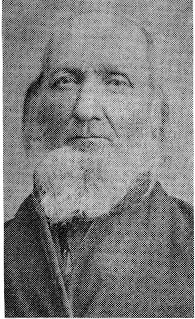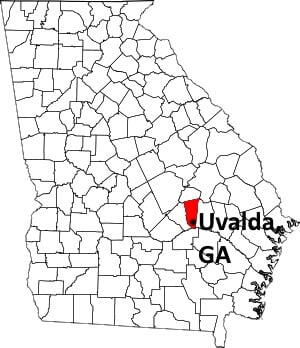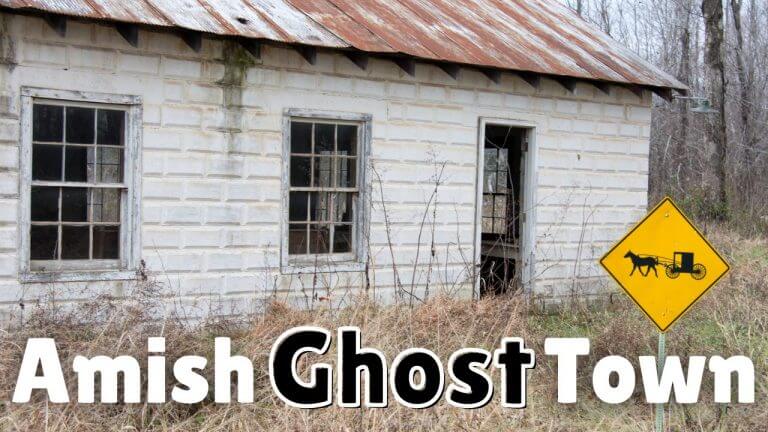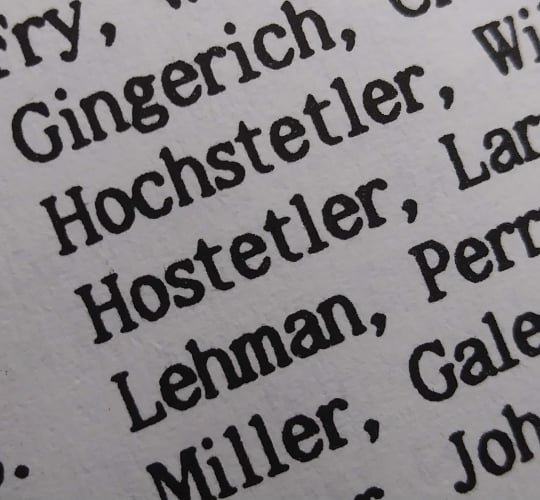Amish History: The Ludwig Riehl Story
Riehl is not the most common of Amish names. You’re most likely to come across it in Lancaster County, and that community’s daughter settlements, but even then it is far outnumbered by all the Stoltzfuses, Fishers, and Zooks.

The Riehl surname is noteworthy for having one of the more famous “Amish origin” stories of any the Amish carry today. This excerpt giving the story is from Amish Roots: A Treasury of History, Wisdom, and Lore, a short piece by David Luthy called “Lewis Riehl Seized at Age Eight”:
Most of the Amish immigrants were poor. A few apparently brought with them tools and property. They bought land soon after their arrival. Lewis Riehl, a lad of eight, was brought to the New World against his wishes. The story, which has been told for generations, can be traced to Elias B. Riehl (1818-1901), his grandson.
Lewis Riehl was born somewhere in Europe in the year 1746 and died in Mifflin County, Pa., May 5, 1806, aged 60 years. When about eight years old, he was stolen from his mother, brought to this country and bound to a certain man until of age. A man by the name of Kurtz persuaded him to get on board a vessel about to sail to America and when once on board, the boy in vain implored to go on on shore but the vessel moved off and he was forced to remain on board and come to America.
It is commonly held that Lewis had a very rough life at the hands of the man he was bound to. This practice of being bound to a person was known as indentured service. It was taken advantage of by many early American immigrants. The person they were bound to paid their passage to America. Lewis had no bed and often slept with the pigs to keep warm in winter. The place where he served his indenture was in Chester County, Pennsylvania. It is not known if he lived near the Amish at Malvern in the same county. But it is said that after his term of service was over he found his first welcome home in America with the family of Christian Zook, an Amish minister in Chester County.
Lewis Riehl joined the Amish church and married an Amish girl, Veronica Fisher, daughter of Christian Fisher. It is not known for sure how many children they had, but there were at least severn, five boys and two girls. Lewis and his family moved to Mifflin County, where he died in 1806 and his wife in 1825. Some of Lewis’s descendants migrated to Lancaster County where the “Riehl” name today is most commonly found among the Amish.
Source: Luthy, David, “The Peight Family.” Family Life (November 1972): 21-22.

Interestingly, another source posits that Lewis – called Ludwig in most places – married into an Amish community, but somehow, and this is unclear, did not become Amish himself. One piece of evidence cited is documentation suggesting he enlisted in the Lancaster County Militia during the Revolutionary War.
The 320-page Descendants of Ludwig Riehl and Veronica Fisher gives more background on the Riehl name and story, as well as an extensive listing of Riehl’s descendants as of 2014. Kevin Riehle, one of the authors of that work, addresses the veracity of the most memorable aspect of Riehl’s story:
I do not have any documentation for the kidnapping story. It has taken on almost legend status among Riehls; I wish I could find some record of indenture or something to confirm it. One thing that does seem probably accurate is that he lived in a German port city rather than in Baden or anywhere else in the south.
That of course does not mean that the transatlantic kidnapping did not happen; oral history can preserve what written records do not. As far as further written accounts, author Sarah M. Weaver wrote a dramatized version of Riehl’s story in a book called My Ocean is Wide.
This abduction tale is one of the more memorable and dramatic origin accounts of any Amish bloodline. It’s hard to imagine the emotions that the eight-year-old boy must have experienced as the shoreline of his homeland grew more and more distant and it began to sink in that he wouldn’t be going home anytime soon.
Next time you meet an Amish Riehl, ask them what they can tell you about their famous ancestor.









Riehl's Quilts and Crafts
I love going to Riehl’s. The first time we went there, as I turned off the road to go down the lane my husband said to me “Do you know these people? Are we going to visit?” He did not realize when it said a home business it was indeed and on the farm home business. We get a chuckle out of it now.
Neat story. I think not uncommon for people going to an actual at-home business. When you drive up you feel like you are going into someone’s private property, which of course is the case, but if there is a business sign out and it’s appropriate hours (not Sunday), you are of course welcome.
Riehls in Upstate New York Area.
In the upstate New York area, specifically Penn Yan, N.Y. there are a number of Riehls who identify as Mennonite. Eli, and his wife Ruth Ellen, started Oak Hill Bulk Foods in the Penn Yan area. Having spoken with Eli, and Ruth Ellen many a time, I know they originally came from Penna. Eli, & Ruth Ellen have sons Phil, and Ken, who are active in the Mennonite faith. Phil currently manages Oak Hill Bulk Foods for his family.
Eli’s family is also still quite active in the Haiti Benefit Auctions that the Mennonites hold. Eli, & Ruth Ellen were very well known at the benefit auctions for their most delicious doughnuts.
Interesting to know about Mennonite Riehls in upstate New York. Is that a plain Mennonite community or on the more modern end?
On a somewhat related note, Kevin Riehle also goes into the various spellings of the last name and some of the lines which emerged over time. At the link to riehle.net in the post, he also shared the following:
The “e” was added at the end of the 19th century when my great grandfather, Jacob Smith Riehl(e), had a falling out with his family. Supposedly, his parents took in a boarder who basically became a foster brother. He took the Riehl name, but turned out to be somewhat of a cad, so my great grandfather, wanting to distance himself from him, added the “e”. There is some suspicion that my great grandfather may have actually been the cad, but nevertheless the name has been Riehle since then. It was also in that generation that my ancestors left the Amish community. My distant cousins among the Amish in Lancaster Co. still spell it Riehl. We are the only line descended from Ludwig Riehl that has added the “e” as far as I know.
Another indenturement story
Our family on my mom’s father’s side only goes back to my grandfather. He was an indentured orphan, sent out to the Midwest on an orphan train and taken in by a farm family in Nebraska. They had the option, when he turned 21, of officially adopting him, or turning him loose with $100 and a new suit of clothes. (This was in the 1880s — he was a lot older than my grandmother.) They turned him loose, and he never understood why, but it’s clear from his indenture contract which, amazingly, the family still has. They’re probably very rare documents, so one cousin who’s the family historian is its custodian.
He was left on the steps of the home a small group of nuns who were just setting up an orphanage, left anonymously as a newborn with no information but his name pinned to his clothing. They nuns alternated with each child that came in between raising them Catholic or Protestant, which was very open-minded for that time. That small orphanage has turned into a large hospital organization in New York; some years ago my mom took in the indenture papers to show them, and they were absolutely thrilled — he was apparently one of the earliest orphans the nuns had taken in, and there weren’t any records left from that time.
Unlike Ludwig Riehl, my grandfather was very well-treated by his indenture family. They treated him well enough that he thought he was actually a fully member of the family and had been adopted when they chose him off the train — until they said goodbye to him and turned him out into the world after getting his free labor for years! I think it was pretty shabby of them, but it was their option.
I’m glad indenturement, whether voluntary or involuntary like Mr. Riehl’s, is no longer permitted. It’s a system that can easily turn into one of abuse and a dreadful life for the indentured person. Not all folks who took in an indentured person was that bad, but I suspect a lot more were than should have been.
Thanks for sharing this fascinating story! I’ve only rarely heard of other families that started from an indentured child; this is an interesting one to add to my collection. And if I ever run into a Riehl, we can compare family origin stories!
Indenturment
Awesome story about your grandfather. I heard the author of the book “Orphan Train” speak. From what I have read the man with the idea to start the orphan trains started them with a good intention but like so many good ideas there were many situations where the children taken in were abused or not taken care of, they were used as someone to work on the farm. The idea was supposed to be to take in the child, raise them and yes they would help on the farm. Many of the children taken off the New York streets were Irish, because the Irish were thought to be very low people. If you had red hair and blue eyes and no parents you would most certainly be sent west. I hope your grandfather was able to join the group of Orphan Train people that was established.
Orphan trains
I’ve read here and there of the orphan trains, too. Some horrible stories, of children treated like slaves, abused mentally, physically and sexually, some even dying of suspected abuse. Maybe because there were more like them where they came from, no one investigated any claims of abuse, or any deaths too often. Then again, there were many, many stories, of children treated like one of the family from the start, given any medical care they needed at once, if they were malnourished, they were fed, and they were given new clothes and shoes, just like any other children in the family, plus, sent to school to get an education with the other children in a family. These lucky children were often adopted, and loved. I’m glad that abuse seemed to be the exception to the rule, that most were treated well, and loved.
Has anyone read Anne of Green Gables? I seem to remember, Anne was supposed have been a boy, chosen to help around the farm. Instead of a boy, Matthew chose a girl, and, we have a charing series of books-and of course, tv shows! BTW, I like the series with Megan Follows and Colleen Dewhirst the best, but nothing beats the books!
Orphan trains
A PBS documentary about the orphan trains is available to view on The internet. It’s well worth viewing. While some of these children were treated harshly, their treatment reflects the harshness life in those times when life could be brutal and tenuous at best. My own Grandmother was an orphan taken in by a well to do family who operated a brewery and a bank. She worked as a servant in their home. She was not officially adopted so far as I know, but apparently well treated living in their home till she grew up and the rest of her days living above and operating a cafe owned by that family. Her Husband,Daughter, and Son, (my Grandfather, Mother, and Uncle), also worked for the family in their home and their brewery. My Mother described them as the rich people they worked for. They were apparently treated as well as family but never quite actual family.
Orphan Train orphans
That was my grandfather’s situation, too, Geo — he was treated completely as a member of the family. Yes, he had to work hard, but on a farm in Nebraska in the 1870s, life was hard for most people. My grandmother, who grew up on the other side of the state from my grandfather, wrote me a letter when I turned 21 about the “good old days” when she was working for a family, taking care of their four children, doing the cooking, cleaning, gardening, laundry, etc., all while wearing several petticoats and long sleeves and high-necked dresses in the heat. She scoffed at the term “good old days,” needless to say!
My grandfather was indeed Irish, Jewels, although he didn’t have red hair. His name pinned to his clothing was Joseph Donnelly. The family likes to think that he was the last of the Black Donnellys, a horse-thieving gang from Canada from whom a young couple had escaped to New York, but of course there’s absolutely NO proof except the name coincidence. I have family history for my grandmother’s family and both sides of my father’s parents family going back many generations, however, so we just appreciate the mystery behind Grandpa’s origin. I never met him; my parents were living overseas when I was born, and he died 3 months before we came back to the US, when I was nearly 4. My earliest memory, actually, is of my mom reading the letter telling her that he’d died, and crying.
He probably came from Irish immigrants to New York, of which there was many thousands at that time. Unlike our wishful origin for him, he probably was born to an unwed mother. But he was lucky that he was well-raised first by the nuns and later by the family that took him in; he never had a bad word to say about them, I understand.
Green Gables
That series with Megan Follows reminds me of My Grandma, also a feisty flaming redhead who grew up to be successful. I recommend the books and/or the TV series.
At the attention of Erik
Erik
I take this opportunity while we are talking about history and genealogy in this subject. If you are interested in having me write small articles on the high places and Amish characters in Alsace where I live, the starting point of the amish movement, contact me. I wrote a small article about the hamlet of Salm and on the patriarchs Jacob Kupferschmitt and Nicolas Augsburger that I can send you to get an idea. I would have a great pleasure to make discover all this to the readers of this blog. I await your news…
Thanks Romain. Very nice idea. Just emailed you.
Apologies in advance…..not about this post…..was post regarding stolen buggy signs deleted ( or just my imagination)
Amish History: The Ludwig Riehl Story
How Does Audible Function?
To begin with, you receive a complimentary audiobook and
take a free trial of Audible . This could be
one of perhaps an originals or the classics.
At the conclusion of the trial, you can purchase a monthly subscription of Audible.
You want to register for the membership.
Audible awards you, Monthly. You can use this credit to purchase Audible audio books in various
categories like technology, fashion, romance, social media, ads, etc..
You can buy Audible credits or pay per sound book, if you would like to purchase more books.
Interestingly, a member may download two of
six Audible Originals. They don’t charge any credits. You’re able to keep these Audible Originals forever.
You have all Audible audio books in your library if you cancel your subscription.
It’s possible to listen to Audible audio books anyplace using
apps on Windows, your phone or Mac computer or Alexa device.|
What is Audible?
With over 300,000 names to its title, Audible is the world’s biggest vendor and manufacturer of audiobooks. http://draftprosystemsfl.com/forums/users/kensievwright0/
Wow
I have been hearing this story wrong for a long time now. And really crazy that my family history is just online like this and Riehle.net just WOW